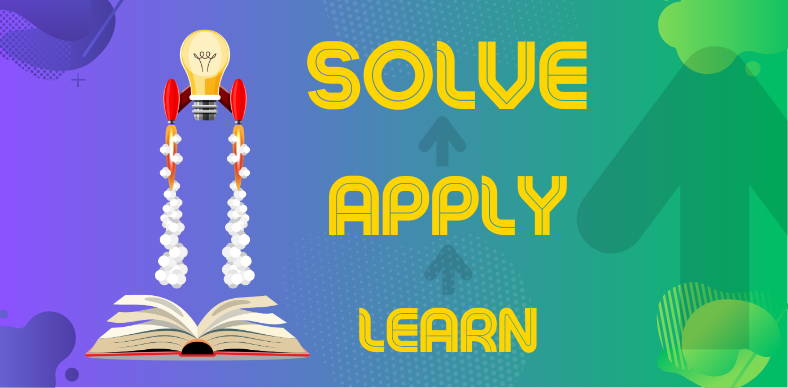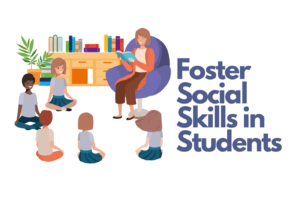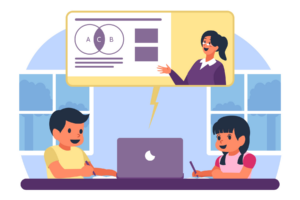How Teachers Can Implement Learning By Solving Approach in Class

What is Learning by Solving?
Learning by Solving emphasizes on active and authentic learning, encouraging students to work collaboratively on problems that are relevant to us all. This method of learning is also called inquiry-based learning or learning by doing or as we like to say learning that’s driven by curiosity.
Learning by Solving approach paves way for deep and engaged learning experience where students are fully immersed in understanding how to apply their existing knowledge to solve the problems at hand and acquire knew learning in the process. When they do this, the knowledge obtained is retained for a long period of time and can be relied upon to solve bigger problems that they encounter in real lives.
Why does Learning by Solving Work?
It doesn’t come as a surprise that Learning by solving is gaining huge popularity worldwide. India’s National Education Policy 2020 recommends this teaching-learning approach to impart practical skills to students. Leading educational institutes across the world are adopting this method within their pedagogy and curricula.
Let’s understand the core benefits of this approach.
- Drives Deep & Engaged Learning Experience
Learning by Solving provides students with an opportunity for deep learning driven by their own curiosity. When working on a problem, students are more engaged in the learning process and are motivated to understand concepts in depth.
Projects based on real-world problems give students a sense of purpose and relevance. This can make learning more meaningful and memorable which could be evident from metrics such as higher attendance numbers, increased involvement of students and better grades.
- Develops Critical Thinking & Problem-Solving Skill
The Learning by Solving approach encourages students to think critically and develop problem-solving skills through the process of investigation, brainstorming, analysis and more. They also learn to think creatively and take decisions that will have real consequences. The high stakes involved make this task more challenging which enables students to enhance their higher order thinking. The skills that student acquire during the process are transferable and can be applied in various contexts, making Learning by Solving method a valuable tool for preparing students for the future.
- Promotes Collaboration, Teamwork and Communication
Learning by Solving underscores the significance of collaboration and communication which is exactly how the professional world works. Students work in groups to develop solutions to complex problems, which requires them to communicate effectively, listen actively and contribute to the group’s collective goals. This can help them develop interpersonal skills and improve their ability to work in teams.
- Enables Personalized Learning
Learning by Solving can be adapted to meet the needs and interests of individual students. By providing students with a choice of topics or projects, they can take ownership of their learning and develop skills in areas that interest them. This can lead to more personalized and differentiated learning experiences.
- Paves Way for Multi-disciplinary Learning
Problems of real life are rarely solved by applying the knowledge of a single subject, they require application of inter-disciplinary concepts. In the Learning by Solving teaching methodology, students learn how to connect the dots between wide-ranging concepts including those they’ve learned in lower grades, which enhances their lateral thinking capabilities.
- Builds Confidence & Trust in Students
The process of breaking down a problem, devising potential solutions and building the best possible solution can give immense confidence to students about making a difference in the world beyond academics. During the process, they learn how to put their ideas across, review others’ inputs and suggestions and take important decisions, all of which have real consequences which give students a solid sense of self-reliance and confidence.
Implementing Learning by Solving Approach in the Classroom
Now that we have covered the various benefits that Learning by Solving can offer to students, let’s find out how teachers can implement this in class.
Find a problem
Go through the curriculum. Now, carefully observe the world around you and the people in it. Try to find problems or opportunities that need solving. Something that will be of interest to your students and that aligns with the syllabus. Few examples could be climate or environmental problems, STEM problems, health & fitness problems, business problems, community problems or problems affecting a particular segment of population such as senior citizens or infants.
The process of identifying the right problem is important as your students will be spending days or even months trying to find a solution. Therefore, this activity is best done collaboratively with students.
Create the project roadmap with timelines
Once the problem is selected, the next step is to build a roadmap to develop the solution. This roadmap will clearly describe the different stages of the project, timelines and specific milestones to be accomplished in each stage. Teachers should be able to understand what resources students have at their disposal and what additional resources and support they would need from you to help them complete the project.
This is the stage where you anticipate potential challenges and be prepared to go deeper trying to uncover different dimensions of a problem alongside the students. Letting students have their say in roadmap creation and scheduling will ensure they adhere to the timelines. Also, do account for failed and unsuccessful attempts as failures and setbacks are a common occurrence in this learning process.
Track the project progress
Build the assessment framework
Assessments in this learning method work best when they are holistic in nature. Map the learning outcomes from the project with the course learning outcomes. Evaluate students’ interest in learning, the degree of engagement with the project, how collaborative they were, how they interacted with other team members, peer-to-peer feedback and what things they need to improve on to come up with a better solution next time. Asking students to conduct a self-assessment and analyse their performance during the project would be a great way to develop self-awareness in students.
Let’s face it – this is not easy. Building the right assessment framework in the Learning by Solving framework is a challenging task because of the subjectivity and abstractness involved. This is why if you are starting out, feel free to consume numerous resources available online. We will be publishing new resources to enable teachers in our TeachPro+ community to be masters in this learning approach.
Analyse the experience
Practice makes perfect. When you start implementing Learning by Solving in your class, there will be ample scope of learning for you as an educator.
What went wrong? What could be avoided? What new practices can be included? How to make the process more structured? How to handle the subjectivity in assessments? These are just a few of the many areas with scope for improvement.
With each project, the experience can get better when you start by evaluating your experience. You can also conduct a group analysis session where students share their experiences about the whole process.
Some Important Tips!
1. Start small
It is best to start small. Choose a problem that is manageable in terms of time and resources. This will allow you to gain experience with the approach and adjust as needed.
2. Set clear goals and expectations
Before starting a project, it is important to set clear goals and expectations. This includes defining the problem to be addressed, establishing learning objectives and outlining the roles and responsibilities of each group member. Clear expectations can help students stay focused and motivated throughout the project.
3. Promote the love of learning
Learning is the ultimate goal for students. Your goal as a teacher is to make your students fall in love with learning. Learning by Solving creates opportunities for students to develop curiosity and inquiry leading to engaged and deep learning.
4. Provide support and guidance
As a teacher, it is important to provide support and guidance throughout the project. You can plan learning activities, provide resources and give timely feedback. However, it is also important to give students autonomy and allow them to take ownership of the learning process.
5. Foster Collaboration and Communication
Collaboration and communication are essential components of the Learning by Solving method. Teachers can facilitate collaboration and interpersonal communication by providing opportunities for students to work in groups, promoting active listening, offering constructive feedback and encouraging students to reflect on their experiences of working in teams.
Celebrate Success
This is last but the most important factor! This approach can be a challenging and sometimes frustrating for students, but it can also be incredibly rewarding. It’s the teacher’s job to appreciate students and celebrate their successes however big or small.
Making students understand the purpose of this approach and its relevance post their academic life can inspire them to give their 100% to every project. Teachers must build and maintain student interest by keeping the environment friendly and learning conducive with just the right amount of challenge and excitement. Doing something difficult need not be a painful experience, don’t let them get hugely disappointed by failures.
As we wrap up this post, we invite all teachers to share with us your thoughts and experiences with this approach. Have you tried it? Do you think it’s a better alternative to traditional learning pedagogies?
Do let us know in the comments!
We at TeachPro+ believe strongly in empowering the teaching and learning community with impactful resources, tools and techniques. Every week, we write about one such area that will be beneficial to the industry we serve. Please subscribe to our blog to be alerted as soon as we post on this blog.
You may also like




